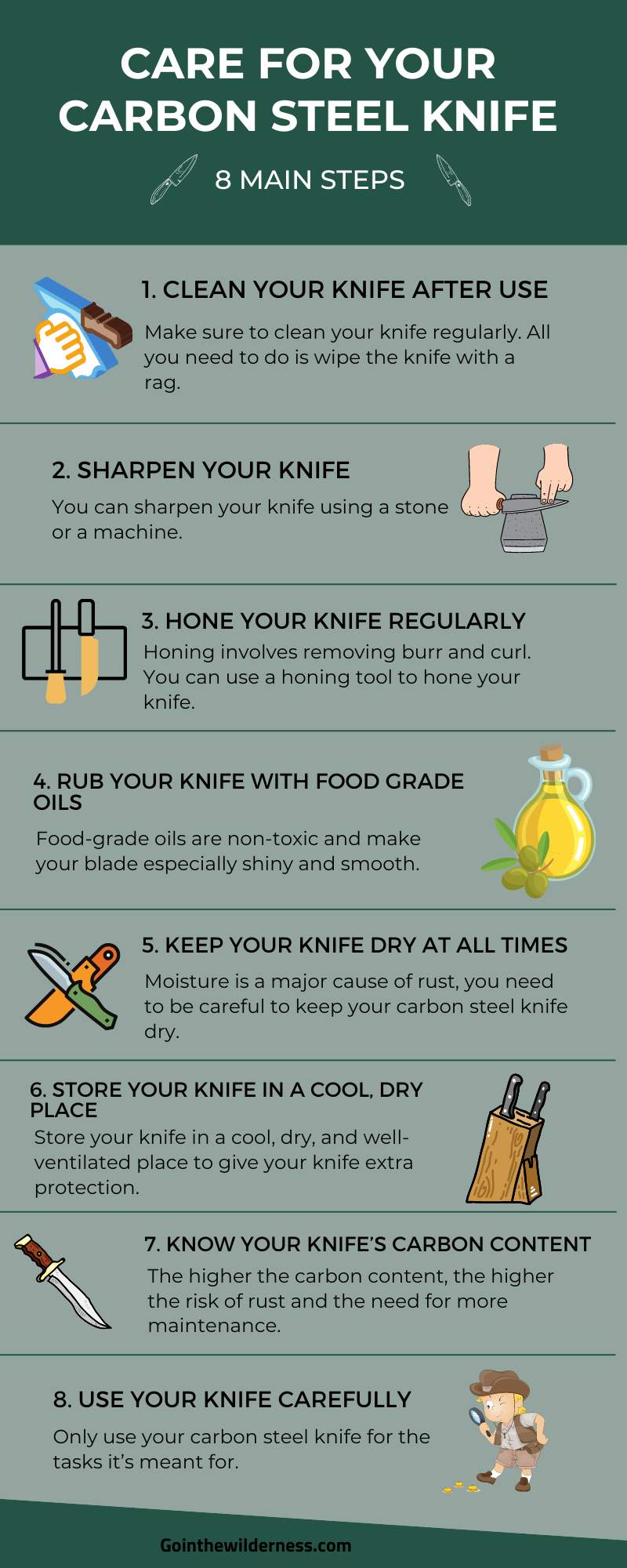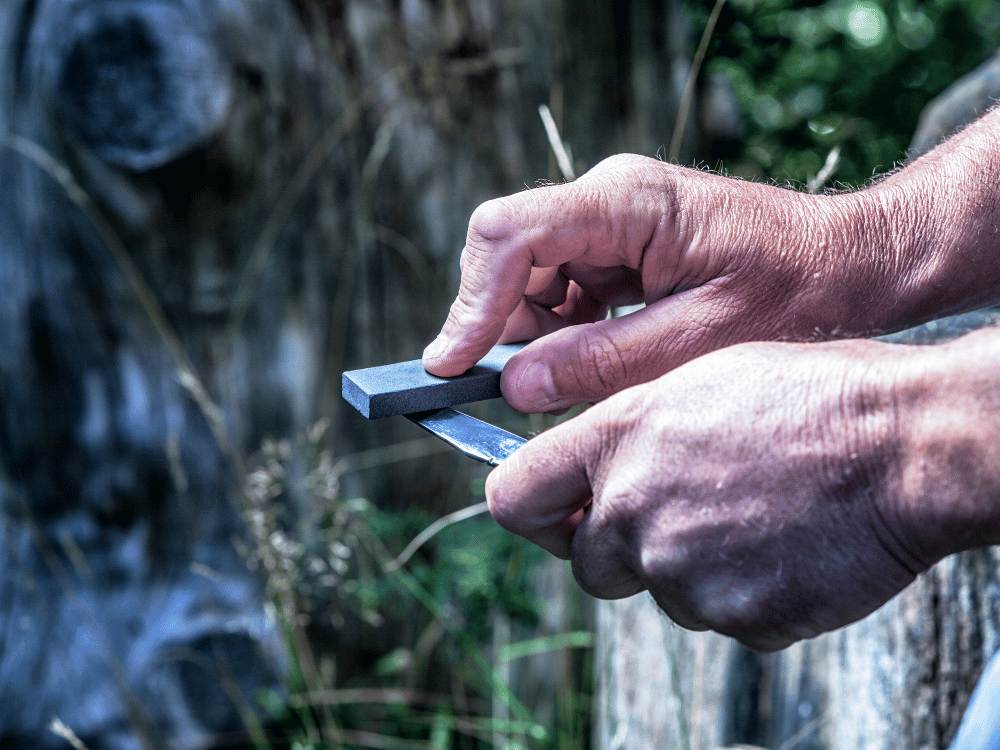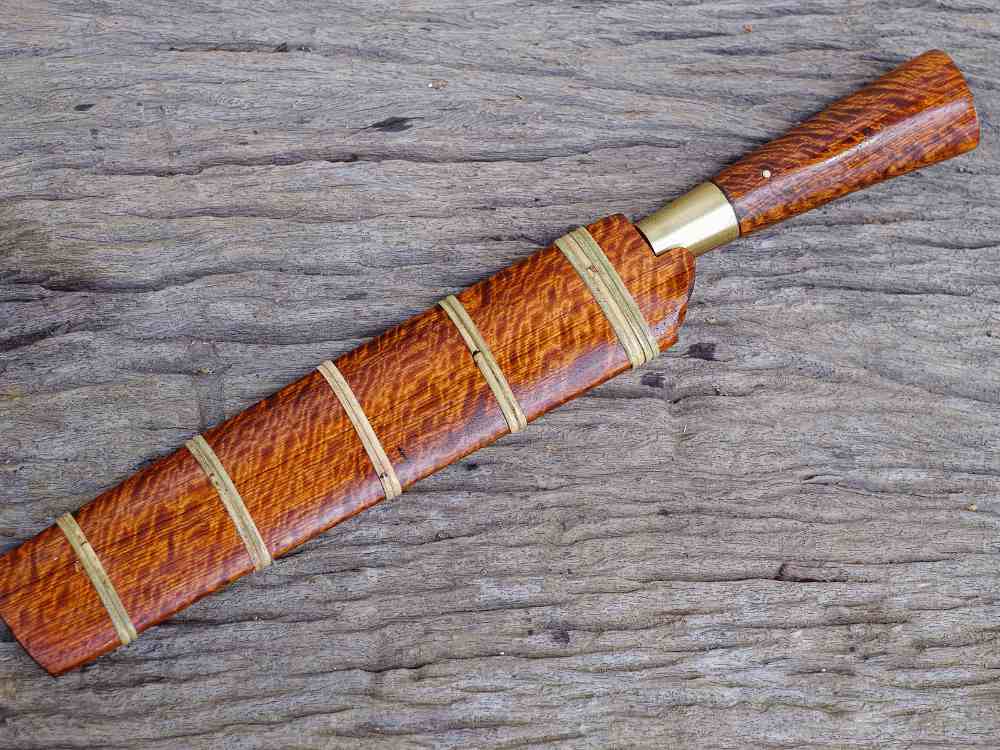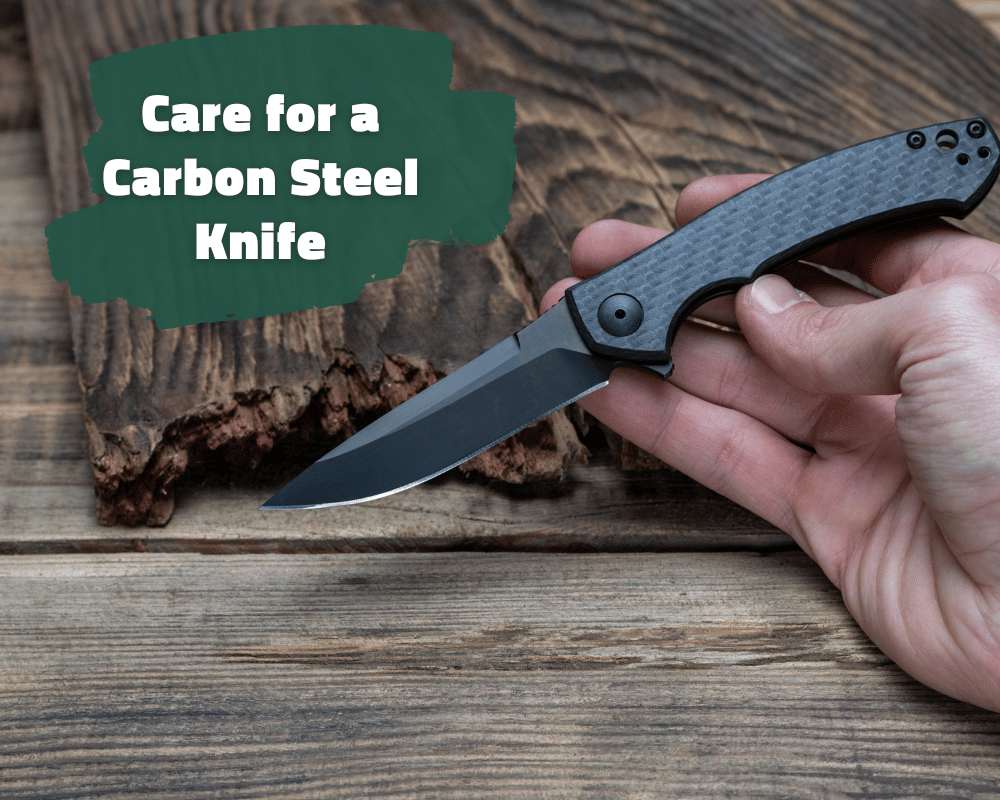Carbon steel knives are a popular choice among campers. They’re easy to sharpen and stay sharper for longer than knives made out of stainless steel. This makes carbon steel knives really handy for camping tasks like chopping fruits and cutting rope.
Yet, you can only enjoy all the benefits of a carbon steel knife if you clean and maintain it properly. In this article, you’ll get to know our 8 expert tips for keeping your carbon steel knife in tip-top condition!
8 Ways to Care For Your Carbon Steel Knife

1. Clean Your Knife After Use
A carbon steel knife’s blade needs to be cleaned regularly. All you need to do is wipe the knife with a rag—this may seem really simple, but it’s a highly effective way of keeping your knife clean and free from rust. Don’t worry, however, if your knife starts to develop a patina over time; often confused with rust, a patina is just a natural tarnish in color and form that occurs naturally on some metals and it won’t affect your knife’s performance.
Tip: Acidic foods like lemons, oranges, tomatoes, and wild fruits can have a serious effect on carbon—if you use your knife to chop such foods, then you should take extra care to wipe it properly after use.
2. Sharpen Your Knife
Sharpening a carbon steel knife is easier than sharpening a stainless steel knife. All you have to do is take a sharpening stone and rub your knife carefully. It may seem simple but it’s definitely worth it! It is also fairly quick to sharpen your knife with a whetstone. If you prefer, you can also use a machine to sharpen your knife instead—just make sure to regulate its force carefully so that your blade doesn’t chip or get damaged. Ideally, you should sharpen your knife twice a year (if you do it more often, you might risk damaging your blade).

3. Hone Your Knife Regularly
While sharpening involves literally shaving off little bits of your knife, honing involves removing the burr and curl. You can use a honing tool to hone your knife—most knives come with a honing rod but you can buy one separately, too. Know that, for a carbon steel knife, you’ll often need to hone it more regularly than you sharpen it. Honing once a month should be great! But if you use your knife a lot, you might want to consider honing it more often.
4. Rub Your Knife With Food Grade Oils
Another step you can take to protect your carbon steel knife is to rub it with oil after using it. Simply wash your knife and rub it with a food-grade oil from a store. You don’t need to buy a special oil for this; food-grade oils are great as they’re non-toxic, which is ideal if you use your knife for chopping food and so on. Food-grade oils also make your blade especially shiny and smooth, while other types of oil become sticky over time and can render your knife almost unusable!
5. Keep Your Knife Dry at All Times
Moisture is a major cause of rust when it comes to knives, so you really need to be careful to keep your carbon steel knife dry. When you’re out in the wild, try to dry off any splashes of liquid straight away. Also, you should keep your knife stored in a dry sheath when you’re not using it. By doing this, you’ll also prevent bacteria from building up on your blade.

6. Store Your Knife in a Cool, Dry Place
As well as keeping your knife dry when you’re out bushcrafting, you need to keep it dry when you’re at home and not using it, too. Store your knife in a cool, dry, and well-ventilated place, away from damp. That way, you’ll give your knife extra protection against rust and erosion due to other environmental factors.
7. Know Your Knife’s Carbon Content
Different carbon steel knives need different levels of care depending on how much carbon they contain. The higher the carbon content, the higher the risk of rust—so a carbon steel knife containing 0.3-0.7% carbon needs less maintenance than one containing 0.8% carbon or more. If you’re unsure as to how much time and effort to spend on looking after your blade, take a look at its carbon content and adjust your maintenance strategy accordingly!
8. Use Your Knife Carefully
And finally, to keep your knife in good shape, you need to make sure you don’t abuse it. Only use your carbon steel knife for the tasks it’s meant for—like cutting food, rope, and rubber containers. Using a carbon steel knife to cut wood and other very hard materials will risk chipping the edge of your knife and damaging it permanently. It’s not worth it! If you need something sharper, you always can get a machete.
With these 8 steps, we hope you’ll now feel confident in keeping your knife protected against wear and tear, rust, and damage. The better you care for your knife, the better it’ll work and the longer it’ll last—so it’s definitely worth taking the time to look after it during and in between trips.
I am Bruno. Navigating the urban rush by day, I find peace under the stars by night. Alongside my loyal companion and co-adventurer Lilith, we explore the balance between city life and nature’s embrace. Through writing and films, I delve into bushcraft and the wild’s allure.
GointheWilderness is my bridge between these two realms, guiding you to reconnect with your innate wilderness.
Eden is here and now; join us in rediscovering it.

